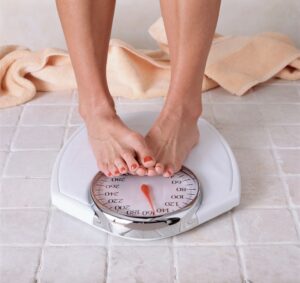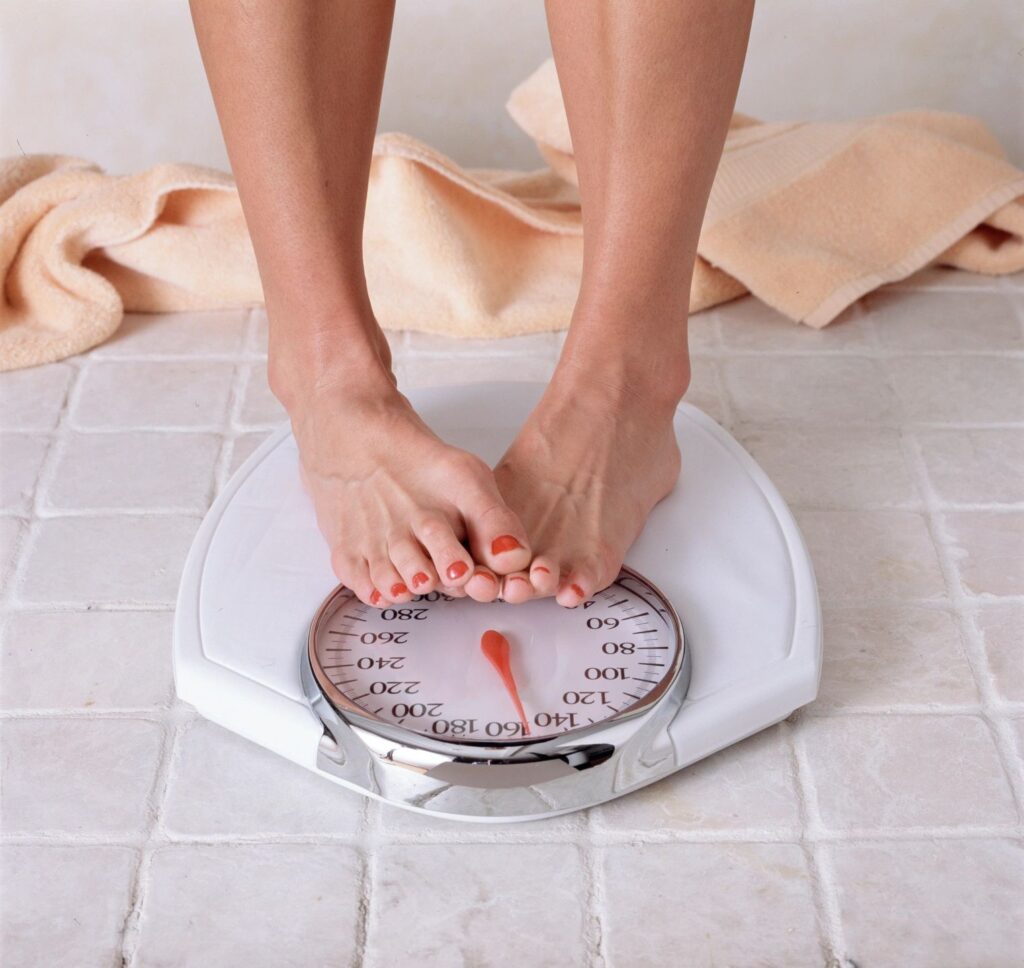For most people looking to “get in shape,” the goal is to lose as much weight in as short a time and with as little effort as possible. More often than not, that isn’t going to happen. Training programs require hard work and dedication.
Losing weight is difficult, and achieving a certain goal weight may not necessarily correlate with health or looking better naked. It can be incredibly frustrating not to see the scale dropping after all the hard work you put into your training and diet.
Don’t worry, the scale can be incredibly deceiving… when you start a new workout plan, you won’t necessarily see the scale budge at first. This can be due to any number of reasons, such as muscle glycogen storage and water retention, as your body adjusts to your new diet and exercise routine.
And if you’re using a smart training program that includes weight lifting, you’ll gain muscle while losing fat. Because muscle is more dense and weighs more than fat, you might not see the scale move then, either. In fact, the scale may go up, which can be really upsetting if your goal is weight loss.
 Bodyweight naturally fluctuates day-to-day, even when you’re not exercising. This means you won’t get a true idea of how exercise is impacting your body from the scale if you weigh yourself daily. Small changes won’t be noticeable day-to-day. It’s a better idea to weigh yourself at the beginning and end of your fitness program to see how far you’ve come, and at regular intervals throughout the program. Every two weeks is a good time frame, since there will be a measurable difference in your weight over that time if your program is working.
Bodyweight naturally fluctuates day-to-day, even when you’re not exercising. This means you won’t get a true idea of how exercise is impacting your body from the scale if you weigh yourself daily. Small changes won’t be noticeable day-to-day. It’s a better idea to weigh yourself at the beginning and end of your fitness program to see how far you’ve come, and at regular intervals throughout the program. Every two weeks is a good time frame, since there will be a measurable difference in your weight over that time if your program is working.
So don’t stress about the number on the scale. You may even want to hide the scale in a cabinet or closet and only take it out on those days that you’re due for a progress check (every other week, or once a month for longer-term training plans).
At this point, you may be wondering what good your bathroom scale is.
“Getting in Shape” Is About More Than Weight Loss
If the scale can’t tell you how fit you are, what can? Well, your progress in the gym is a pretty good indicator. Are you moving more weight today than when you started; are you able to do more reps in a given time period? Those are great measures of strength gain, and gaining strength means you can do more in your workouts, thus burning more calories and shedding more fat. Has your endurance improved or do the workouts feel easier than they used to? This means your muscles and heart are becoming more fit, making you more able to tackle intense workouts, build more muscle, and burn more fat.
Weight loss is one awesome side effect of starting a fitness program, but it will take time and happens at different rates for different people. A better indicator of weight loss than the scale is how you look and feel. If you see changes in the mirror, that’s a great sign your training is working. Just like the scale, it’s hard to see changes in the mirror day-to-day, but progress pictures taken every other week or once a month can be a great way to keep track of changes in your body composition. If your clothes are starting to fit better, or even getting a little loose, that’s a great sign you’re leaning out.
While you’re trying to ignore the scale, there are immediate benefits of exercise that you should focus on in the short-term as you work your way toward that goal weight.
From the moment you start exercising:
- your heart rate elevates, pumping more oxygen through your body to fuel your muscles and your brain while improving your cardiovascular health;
- new connections are formed in your brain because of increased blood flow, so your short term memory improves (and so does your ability to learn new information – there are implications that consistent exercise prevents memory loss and possibly Alzheimer’s as we age);
- endorphins are released in your brain that generate a happy mood, making exercise a great antidote for daily stress and anxiety, as well as an effective treatment for depression;
- your metabolism increases and remains high after your workout ends (for about 24-48 hrs);
- and, as contradictory as it sounds, exercise gives you more energy after your workout;
- in fact, you’ll sleep better that night after exercising for as little as 30 minutes during the day.
Even if the number on your scale isn’t dropping like a stone, know that you are healthier, happier, more energized, and potentially smarter than you would be as a couch potato.
The best way to tell you’re making progress isn’t the scale, it’s by how you feel – you’ll have more energy, your clothes will fit better, your workouts will seem easier. And all of these exercise benefits translate into the real world in countless ways.
 Everyday tasks like yard work will be easier, you’ll be able to keep up with your kids or your dog, and your rec volleyball game will improve, earning you more bragging rights with your friends. You’ll be able to push harder when skiing or hiking, and you won’t feel as stiff and sore after a day on the mountain. All good things!
Everyday tasks like yard work will be easier, you’ll be able to keep up with your kids or your dog, and your rec volleyball game will improve, earning you more bragging rights with your friends. You’ll be able to push harder when skiing or hiking, and you won’t feel as stiff and sore after a day on the mountain. All good things!
There are also long-term benefits of exercise, like lower blood pressure and heart disease risk, better balance and flexibility, stronger muscles and bones… and of course, weight loss, which will come in time. Starting a training program to “get ripped” is great, but remember that’s not all you accomplish when you commit to getting fit – you’re also improving your overall health and quality of life.
Maybe throwing out your scale is extreme. At the very least, don’t live or die by the number you see when you step onto it.
You are not defined by that number. The weight you see staring back at you from your bathroom scale is merely feedback; a tool to make sure your training program is working. And if, after a couple weeks, you aren’t seeing any progress on the scale or in the mirror, you may need to tweak things to get to where you want to be.
If you are stuck in a rut with your fitness program,
>>> APPLY HERE <<<
And we’ll set up a FREE strategy call to help you break through your weight-loss plateau.

